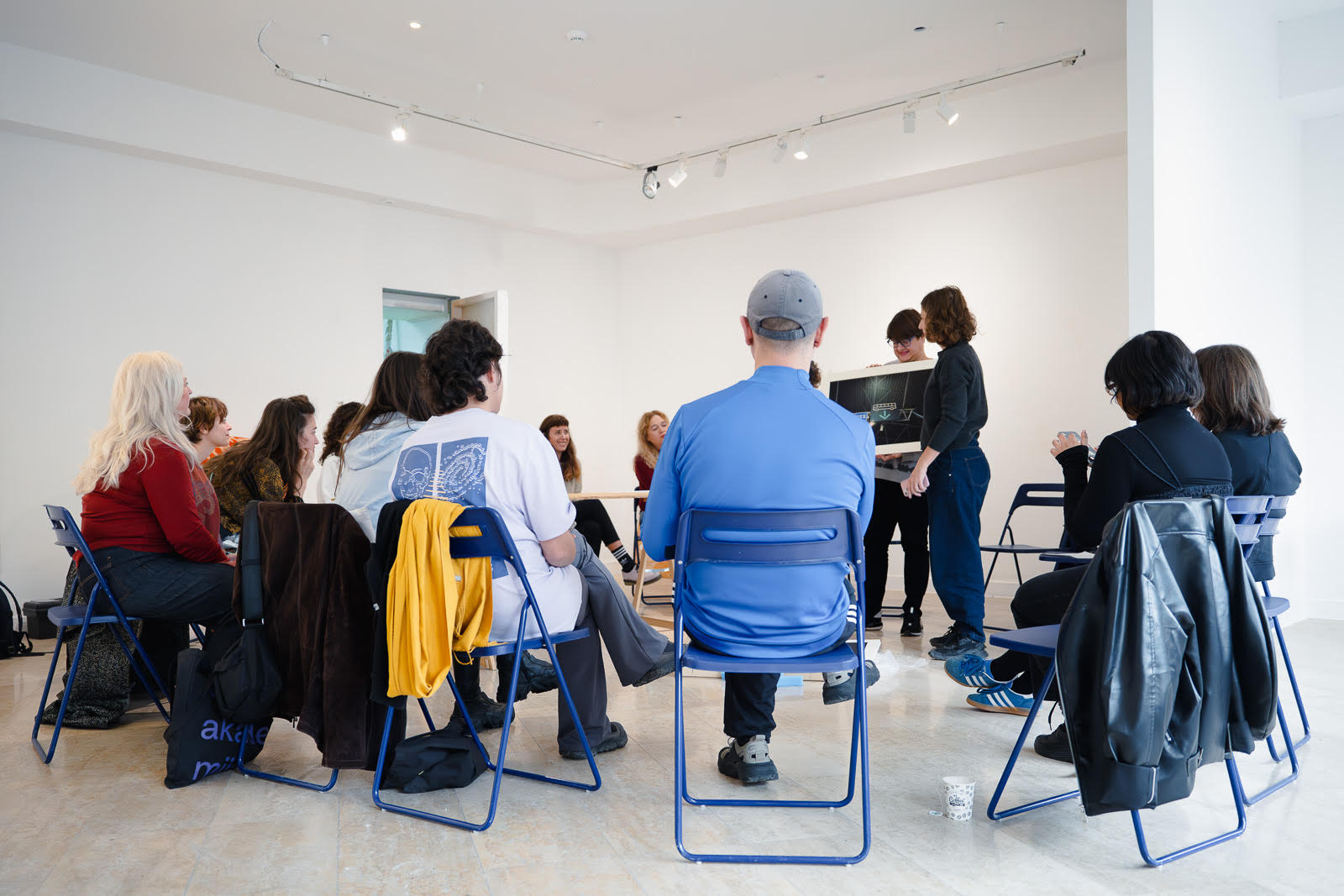Please, introduce yourself and your artistic practice. Where and when do you work/create?
Born and raised in Beirut, I have been based in Berlin since 2018 where I work at the Haus der Kulturen der Welt, study within the Masters program in philosophy at the Freie Universität, and develop my own artistic practice. Coming from a background in architecture and art history, my current practice sits at the crux of philosophy, cultural theory, and questions on the interface of politics and aesthetics. I would broadly describe my practice as an aesthetic investigation of social and political forms in conversation with - or better yet, in confrontation with - the legacies of continental philosophy, structural linguistics, and psychoanalysis.
Understanding my work as necessarily both individual and collaborative, I find myself alternating my processes between shared and collective spaces as well as private settings. As such, my practice unfolds regularly within the various reading and discursive networks that I engage with and always takes place in parallel within the intimacies of my room and studio.
What mode of education was the one that made an impact on you the most? (within or outside official institutions)?
Besides the undeniable impact of academic and cultural institutions, I would point to the various ongoing reading groups that I am involved in as the pedagogical settings that have shaped and continue to shape me and my practice the most. Set up in most cases as informal groupings across different personal and professional networks, these various reading groups engage with very diverse texts and bodies of work yet share a similar approach in which “reading” is taken up as both practice and space. These recurrent sessions produce a mode of education that continues to provide me with influential content but also simultaneously challenge me to think and rethink forms and modes of being, practicing, and producing knowledge together.
How do you feel about collaborations and collectivity in the changed circumstances of limited possibilities of getting together?
As the urgency and significance of collaboration persist (and perhaps even increase), coming together online and from and within confined spaces proves to be more and more difficult. Yet, abandoning an idea of ‘togetherness’ given current limitations would be detrimental. I find it necessary to develop - in response to today’s conditions but also through reflecting on longer-term understandings of work and working conditions – new infrastructures (digital/analogue) that allow for collaborative methods to take shape through durable conversations and process-oriented practices that push against quick and shallow renderings of collectivity.
How do you see the issue of artistic productivity in times of the pandemic?
The question of production is inherent to art as such, and its complexities precede the current conditions. What the pandemic perhaps provides is a clearer insight into the established inseparability of what we perceive as individual productivity and wider systems of economy and valorization. I would suggest then that the issue of artistic productivity, in an effort to avoid the overworked nature of the individualized subject, must be taken up today firstly as a social practice and as an act of making space.
Which art work(s) do you come back to or keep in mind?
I have to say that my reference system is in continuous flux and selecting a work or works is a difficult task. At the moment, I find myself constantly returning to the work of Pati Hill, and more specifically her 1979 publication Letters to Jill. There is something in her composition of textual and visual material that resonates with my current explorations. The different media her practice takes up never seamlessly come together (in general and in the book), and so her various articulations remain in the tension of mismatching – in a non-harmonious relation.
What would you wish for the post pandemic art world?
A few things. I would hope that contemporary art in its current iterations works to reformulate its understanding of the “global”, that it always easily aligns itself with, and the inherent contradictions in claiming/laying forth such language through institutions of art. I think it’s imperative to understand that it sits within the broader transnational socio-political ecologies (corona made that clear), and should steer away from reproducing an exceptional position of mere, distanced reflection.




